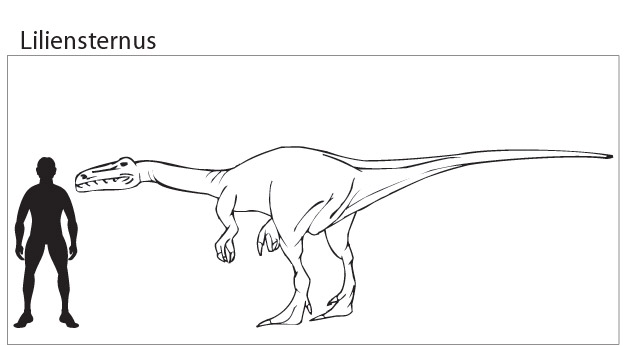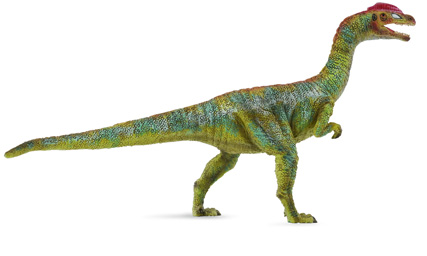The Overlooked yet Remarkable Halticosaurus (Liliensternus)
Liliensternus liliensterni – Late Triassic Predator
Roaming the lowlands and flood plains of what was to become western Europe some 210 million years ago was the lithe and agile predatory dinosaur Liliensternus (Liliensternus liliensterni). Measuring some six metres in length and weighing more than two and half times that of a male African lion (Panthera leo), this was a formidable dinosaur, very probably the apex predator in the region.
A Scale Drawing of the Dinosaur (Liliensternus liliensterni)
Picture credit: Everything Dinosaur
Liliensternus
This Late Triassic theropod was named and described by the German palaeontologist Friedrich von Huene in 1934. However, he had originally named this dinosaur Halticosaurus liliensterni. The genus name translates as “nimble lizard”, as von Huene wanted to draw attention to the long, legs and relatively lightweight body. Liliensternus was imagined as a speedy, agile hunter. The trivial name honours the German scientist Hugo Rühle von Lilienstern who over his lifetime built up a vast collection of Triassic aged fossils from Europe.
Relatively few models of Liliensternus have been produced but CollectA have a good quality one within their not to scale “Prehistoric Life” series. The long tail and those powerful legs really give the impression of an agile dinosaur.
The CollectA Liliensternus Model
Picture credit: Everything Dinosaur
The “Rühle Collection”
To view the CollectA “prehistoric life” model collection available from Everything Dinosaur: CollectA Prehistoric Life Models.
The “Rühle collection” was amassed over Hugo Rühle von Lilienstern’s lifetime, where the huge collection of Mesozoic fossils could be housed became an issue between East and West Germany, part of the fall out that occurred with the division of Germany after the World War II. Finally, the matter was resolved amicably and the majority of the specimens are now part of the vertebrate fossil collection of the Berlin Museum of Natural History.
Scientists from all over the world have found the collection an invaluable resource as it provides one of the most comprehensive collections of Middle to Late Triassic vertebrate fossils known in the world. Although, not a professional palaeontologist (Hugo Rühle von Lilienstern was a military surgeon by training), it is fitting that this amateurs contribution to our understanding of the fauna and flora of Triassic Europe has been acknowledged by the naming of a dinosaur. In fact, when one considers Halticosaurus liliensterni as well as Liliensternus liliensterni it is a very rare honour indeed to have the same dinosaur named after you twice!



